#mass distorts spacetime
Explore tagged Tumblr posts
Text
How Gravity Disruptors Work
We all are aware of the gravity disruptors inside of iterators, right? They... disrupt gravity.


I believe they do this through fluctuating karmic fields in parallel planes of existence, which affect spacetime and gravity by rapidly decreasing or creating "negative" mass.
Let me break down what I mean
Karma as a force, and alternate planes
Karma is like a force of the universe alongside that of gravity, electromagnetism, and weak/strong force. The iterators have an incredibly pragmatic view of karma and the cycles, treating it more like a science with odd spiritual elements involved. The iterators calculate and solve through traditionally empirical means, yet still pray and meditate.
- "It became the symbol for enlightenment as it momentarily enables a creature to let go if its carnal self, and to contact the selves of other planes - dreams, memories, imagined worlds."
Moon mentions other planes in her Karma Flower dialogue. We can understand there's a "dream" or "cerebral" realm that you could see through with this flower.
These dream plane(s) are HEAVILY associated with karma, and karmic fields, as your ingame deaths experienced in this plane cause your karma to decrease, and the karma flower that lets you contact these cerebral plane selves ... affects your karma!
As well as this, Hunter in vanilla is described as having a "karmic imbalance", once again wording it like it's a force that can be measured and somehow imbalanced
The behaviors of gravity disruptors
Having established karma as a universal force, and also alternate realities, let's actually look at the gravity disruptors themselves.
They appear to very clearly have an orbit, and drag nearby things into it. They also distort light they're so powerful!
But... you can't get to the center. The center of a gravity disruptor repels you. Violently. You can't get to the center naturally through gameplay due to the force.
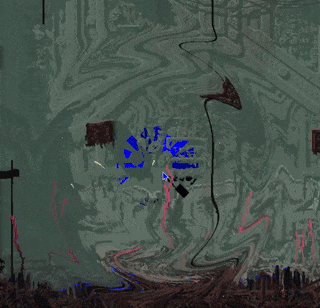
So rather than this being like a black hole, it's actually closer to theoretical white holes!
The distortion of time and gravity
This leads further into my next point. According to general relativity, the mass of a black hole causes a huge sink in spacetime, slowing it down. So a white would be the opposite, wouldn't it? Something that REPELS matter because of its negative mass!
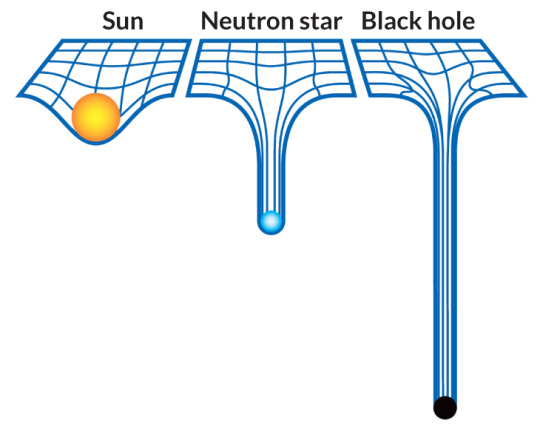

How do karma and gravity interact with each other then?
Well, like a black hole, the Void Sea slows down your perception of time until you enter it, at which point you return to normal speed. However, unlike one, gravity seems to get lower

So perhaps the Void Sea- and by extension void fluid- are somehow manipulating the spacetime continuum to both lower gravity and slow down perceived time?
Now this leads me to my biggest point...
Parallel planes!
I believe that karma and gravity are intertwined, as the boundaries between realities in rain world seem to be very vague and blurred, as you can never tell in the void sea when you actually enter the other reality. And as mentioned in the above Karma Flower dialogue, apparently you were able to contact other selves in other planes of reality.
By warping the karma fields in a parallel plane, you can warp gravity in a localized area, creating the effect of a 0g environment! This was done most likely through the use of void fluid
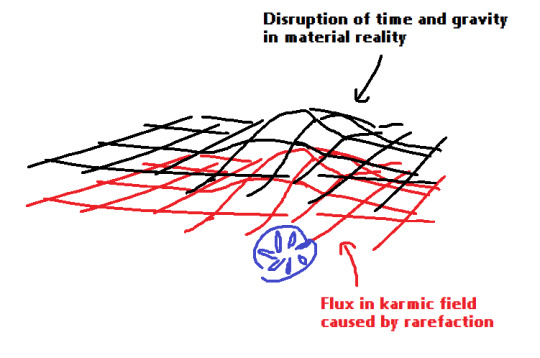
These parallel planes of reality between cerebral and corporeal planes already interact with each other to a noticeable degree!
How do iterators manage to "smooth out" this flux? Well, I'll be honest I'm not sure. But the fact they have the technology to do that to begin with is rather impressive!
What about Mass Rarefaction Cells

Rarefaction is an actual thing, for those who didn't know. I actually found this out recently.
From Wikipedia: "Rarefaction is the reduction of an item's density, the opposite of compression. Like compression, which can travel in waves (sound waves, for instance), rarefaction waves also exist in nature. A common rarefaction wave is the area of low relative pressure following a shock wave (see picture)"

And if you refer back to the examples of general relativity I brought up... you can see it's doing the opposite of compression. It's stretching- being rarefacted!

And in some ways, it reduces density- or gives the illusion of such.
So yes! Rarefaction is actually relevant and isn't some odd technobabble thing.
So how do they produce energy?
The orbit formed by rarefaction cells can produce kinetic energy, replacing the role of a force spinning the turbine inside of a generator. This kinetic energy is then converted into electrical energy, transported on those powerrails/busbars

This might also be the explanation to the "washing machine" look...
Closing notes
I know I've said in the past that rarefaction cells are probably not the safest and wouldn't be used very often, and how much I dislike their existence.
I still think that.
I don't believe that the vanilla gravity disruptors work the same way. They use void fluid of course, but they're MUCH safer I imagine- at the cost of not being easily transported around like a cell.
but yeah thats what I think
364 notes
·
View notes
Note
INCOMING MESSAGE FROM ITERATOR ██████████████████████
███: In light of you opening your communications and my own failed facilities, I have grown curious with the data that other Iterators collect, and therefore I am contactactactactactac- contacting you with the little window of time I have. Any data will sufficeice, but my communication arrays flicker on and off occasionally and so you █ill hahahahaha- have to send me the data dur██g one of these timestamps, or it will fail. Thank you in a█vance. [Attached is a list of time ranges that grow progressively shorter and more distant, until the last in the list is just long enough for a single pearl's contents to be sent.]
TSAC: The data I collect is primarily astronomical in nature, so I am unsure if you will have any use for it. I understand that my area of study is rather niche. However, I would be happy to share some of my data with you regardless.
Let me see… many of the data repositories I have immediate access to are much too large to send over the time frames you have provided… hmm…

Ah, this should suffice. I recently completed spectral classification of a large cluster of galaxies within the constellation of The Martyr. Analysis of the cluster indicates that it contains much more mass than is visible, resulting in a very strong gravitational lensing effect. This mass discrepancy is likely caused by significant karmic disruption in the spacetime surrounding the cluster. Gravitational distortions of this magnitude can reveal the nature of interactions between the Karmic and Carnal planes on a macroscopic scale. I’ve attached the results of my observation; a map of the mass distribution within the cluster and resulting karmic field instabilities.
Maybe you can utilize this data in your own studies. If nothing else, I hope it satisfies your curiosity.
34 notes
·
View notes
Text
WHAT HAPPENS WHEN A GRAVITATIONAL WAVE MEETS A BLACK HOLE??
Blog#459
Wednesday, December 4th, 2024
Welcome back,
When two things in the Universe that “always” occur meet one another, how do you know which one will win? Gravitational waves, for example, always pass through whatever they encounter: empty space, dark matter, gas clouds, plasma, dust, planets, stars, and even dense stellar remnants like white dwarfs and neutron stars. They carry energy, which they can deposit into objects they affect, deforming and distorting space (along with everything in it) as they pass through.

Nothing ever seems to stop gravitational waves, with the only alterations to “unperturbed propagation” coming from the effects of distorted spacetime due to the presence of masses and the expanding Universe.
But on the other side of the coin, we have black holes, which have an event horizon: a region from within which nothing can escape. So when the immovable object meets the irresistible force, who wins? While gravitational waves can be emitted from outside the event horizon of merging black holes, if something takes place inside the event horizon, it cannot escape.
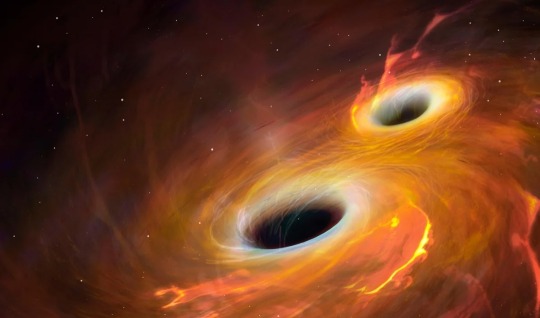
So what happens, then, if a propagating gravitational wave generated by a black hole-black hole merger runs into another black hole: one that didn’t play a part in the generation of those waves?
The two main options you’d likely consider are that it could pass though the black hole the way it passed through everything else, or it could be swallowed and absorbed by the black hole, adding to its mass/energy. Here’s how to puzzle out which one would actually occur.

Let’s start with black holes: objects that are not to be trifled with in the Universe. When you’re far away from a black hole’s event horizon, it appears to behave just like any other ordinary mass in the Universe. From the location of Earth, for example, the gravitational effects that we experience from our Sun are indistinguishable from the ones that would be generated by:
a white dwarf,
a neutron star,
or a black hole,
of the same exact mass.

We would still experience the same orbit, with the same speed, the same period, and the same elliptical pattern (and even the same level of relativistic precession) that we experience from our Sun. The only differences that would be perceptible would appear when we looked in the vicinity of the Sun (or whatever replaced it) itself. The bending of background starlight, along with all other forms of matter and radiation, is intensified the closer and closer you get to a compact, massive object: regions that are currently obscured by the disk of the Sun.
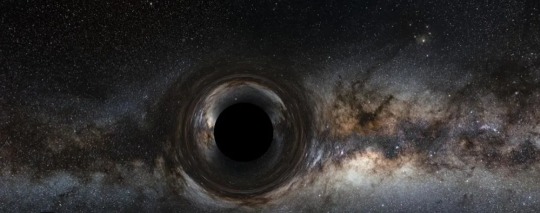
Other than the distortion of space from the innermost ~1 degree closest to the center of the Sun, where the curvature of space is most severe, there are no other detectable differences.
But that inner region of space matters tremendously when we consider the impact it has on absorbing various types of matter and radiation. For example:
the Sun, being an opaque object, would absorb everything that it interacts with, like protons, neutrons, electrons, and photons, but would be transparent to particles like neutrinos and antineutrinos,
white dwarfs, being opaque but much smaller than the Sun, would have a much smaller cross-sectional area (perhaps only ~0.01% that of the Sun) but would still be opaque to protons, neutrons, electrons, and photons, and due to its density would begin absorbing a small fraction of the neutrinos that strike it,
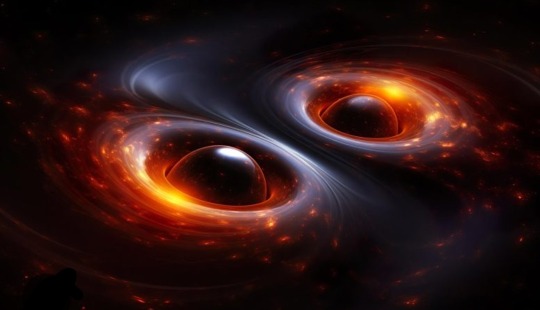
neutron stars, even smaller and denser than white dwarfs, have a much lower area over which they absorb protons, neutrons, electron, and photons, but will absorb ~100% of the ones that strike it, along with up to ~50% of the neutrinos (and antineutrinos) that pass through its diameter,
and black holes absorb absolutely 100% of everything we know of that touches or crosses its event horizon.
From a black hole, if you’re an energy-carrying entity, there ought to be no escape.
Originally published on https://bigthink.com
COMING UP!!
(Saturday, December 7th, 2024)
"HOW TO DESTROY A BLACK HOLE????"
#astronomy#outer space#alternate universe#astrophysics#universe#spacecraft#white universe#space#parallel universe#astrophotography
32 notes
·
View notes
Photo

2023 September 12
Galaxy Cluster Abell 370 and Beyond Image Credit: NASA, ESA, Jennifer Lotz and the HFF Team (STScI)
Explanation: Some 4 billion light-years away, massive galaxy cluster Abell 370 is captured in this sharp Hubble Space Telescope snapshot. The cluster of galaxies only appears to be dominated by two giant elliptical galaxies and infested with faint arcs. In reality, the fainter, scattered bluish arcs, along with the dramatic dragon arc below and left of center, are images of galaxies that lie far beyond Abell 370. About twice as distant, their otherwise undetected light is magnified and distorted by the cluster's enormous gravitational mass, overwhelmingly dominated by unseen dark matter. Providing a tantalizing glimpse of galaxies in the early universe, the effect is known as gravitational lensing. A consequence of warped spacetime, lensing was predicted by Einstein almost a century ago. Far beyond the spiky foreground Milky Way star at lower right, Abell 370 is seen toward the constellation Cetus, the Sea Monster. It was the last of six galaxy clusters imaged in the Frontier Fields project.
∞ Source: apod.nasa.gov/apod/ap230912.html
241 notes
·
View notes
Note
Two things:
Do you think "English" as a name for topspin relates to black hole stuff?
Do you think "Lord English" as a synonym of "Huge Bitch" might bring us back to Problem Sleuth, where Mobster Kingpin became a black hole by concentrating his mass in a corset?
it certainly could? intuitively, an "English" spin applies to the billiard ball, and not the hole - but I guess in homestuck (and in astrophysics?) those are doubles for the same thing...
this is way above my pay grade, but a black hole's spin actually does have a lot to do with its physics: in particular, a black hole has to be spinning in order to act as a gateway to infinite parallel universes. so it's not like this line of thinking is totally divorced from what we're talking about.
youtube
to a layman, the science surrounding this stuff is obtuse to put it mildly, but the above video is a great visualisation of a bunch of the more arcane applications of black holes in relativity. spinning black holes in particular come up at the 29 minute mark.
the only way the "umbra" in Calliope's trolltag has ever made sense to me is as a reference to a psychological "umbra", or shadow - i.e. a "uranian umbra" is your gay split personality, so to speak. but since "uranian" has a double meaning (a WEALTH of double meanings, really, since "Urania" was also one of the mythical muses) it stands to reason that "umbra" should also have some hidden astronomical aspect as well... in which case, is there anything a "spinning shadow" could be OTHER than a black hole??
on the Kingpin: it's all a little over my head, sorry... if we're talking about a "bitch" that's so "huge" it distorts spacetime I can only think of the Vast Expletive which "rung through the cosmos" with information "encoded in its wavelengths", like some kind of gravitational wave. but if we're talking about Lord English and wearing corsets, the mind can only travel toward crossdressing and genderbending. in which case, by wearing his girl-version's corset and becoming a black hole, Mobster Kingpin kind of embodies his own "uranian umbra"? ha ha ha.
19 notes
·
View notes
Text

Monitoring 68 pulsars with very large radio telescopes, the North American Nanohertz Observatory for Gravitational Waves (NANOGrav) has uncovered evidence for the gravitational wave (GW) background by carefully measuring slight shifts in the arrival times of pulses. These shifts are correlated between different pulsars in a way that indicates that they are caused by GWs. This GW background is likely due to hundreds of thousands or even millions of supermassive black hole binaries.
Teams in Europe, Asia and Australia have also independently reported their results today. Previously, the LIGO and Virgo detectors have detected higher-frequency GWs from the merging of individual pairs of massive orbiting objects, such as stellar-mass black holes. The featured illustration highlights this spacetime-shaking result by depicting two orbiting supermassive black holes and several of the pulsars that would appear to have slight timing shifts. The imprint these GWs make on spacetime itself is illustrated by a distorted grid.
📷: NANOGrav Physics Frontier Center; Text: Natalia Lewandowska (SUNY Oswego)
#nasa breaking news#nasa image of the day#nasa webb telescope#nasa#astronomy#solar system#astrophysics#physics#james webb space technology#james webb images#hubble#space and time#space exploration#outer space#spacex#spaceship#space
88 notes
·
View notes
Text
A team of physicists has discovered that it’s possible to build a real, actual, physical warp drive and not break any known rules of physics. One caveat: The vessel doing the warping can’t exceed the speed of light, so you’re not going to get anywhere interesting anytime soon. But this research still represents an important advance in our understanding of gravity.
Moving Without Motion
Einstein’s general theory of relativity is a tool kit for solving problems involving gravity that connects mass and energy with deformations in spacetime. In turn, those spacetime deformations instruct the mass and energy how to move. In almost all cases, physicists use the equations of relativity to figure out how a particular combination of objects will move. They have some physical scenario, like a planet orbiting a star or two black holes colliding, and they ask how those objects deform spacetime and what the subsequent evolution of the system should be.
But it’s also possible to run Einstein’s math in reverse by imagining some desired motion and asking what kind of spacetime deformation can make it possible. This is how the Mexican physicist Miguel Alcubierre discovered the physical basis for a warp drive—long a staple of the Star Trek franchise.
The goal of a warp drive is to get from A to B in the time between commercial breaks, which typically involves faster-than-light motion. But special relativity expressly forbids speeds faster than light. While this never bothered the writers of Star Trek, it did irritate Alcubierre. He discovered that it was possible to build a warp drive through a clever manipulation of spacetime, arranging it so that space in front of a vessel gets scrunched up and the space behind the vessel stretched out. This generates motion without, strictly speaking, movement.
It sounds like a contradiction, but that’s just one of the many wonderful aspects of general relativity. Alcubierre’s warp drive avoids violations of the speed-of-light limit because it never moves through space; instead space itself is manipulated to, in essence, bring the spacecraft’s destination closer to it.
While tantalizing, Alcubierre’s design has a fatal flaw. To provide the necessary distortions of spacetime, the spacecraft must contain some form of exotic matter, typically regarded as matter with negative mass. Negative mass has some conceptual problems that seem to defy our understanding of physics, like the possibility that if you kick a ball that weighs negative 5 kilograms, it will go flying backwards, violating conservation of momentum. Plus, nobody has ever seen any object with negative mass existing in the real universe, ever.
These problems with negative mass have led physicists to propose various versions of “energy conditions” as supplements to general relativity. These aren’t baked into relativity itself, but add-ons needed because general relativity allows things like negative mass that don’t appear to exist in our universe—these energy conditions keep them out of relativity’s equations. They’re scientists’ response to the unsettling fact that vanilla GR allows for things like superluminal motion, but the rest of the universe doesn’t seem to agree.
Warp Factor Zero
The energy conditions aren’t experimentally or observationally proven, but they are statements that concord with all observations of the universe, so most physicists take them rather seriously. And until recently, physicists have viewed those energy conditions as making it absolutely 100 percent clear that you can’t build a warp drive, even if you really wanted to.
But there is a way around it, discovered by an international team of physicists led by Jared Fuchs at the University of Alabama in Huntsville. (The team is also affiliated with the Applied Propulsion Laboratory of Applied Physics, a virtual think tank dedicated to the research of, among many other things, warp drives.) In a paper accepted for publication in the journal Classical and Quantum Gravity, the researchers dug deep into relativity to explore if any version of a warp drive could work.
The equations of general relativity are notoriously difficult to solve, especially in complex cases such as a warp drive. So the team turned to software algorithms; instead of trying to solve the equations by hand, they explored their solutions numerically and verified that they conformed to the energy conditions.
The team did not actually attempt to construct a propulsion device. Instead, they explored various solutions to general relativity that would allow travel from point to point without a vessel undergoing any acceleration or experiencing any overwhelming gravitational tidal forces within the vessel, much to the comfort of any imagined passengers. They then checked whether these solutions adhered to the energy conditions that prevent the use of exotic matter.
The researchers did indeed discover a warp drive solution: a method of manipulating space so that travelers can move without accelerating. There is no such thing as a free lunch, however, and the physicality of this warp drive does come with a major caveat: The vessel and passengers can never travel faster than light. Also disappointing: the fact that the researchers behind the new work don’t seem to bother with figuring out what configurations of matter would allow the warping to happen.
The Future of Gravity
On one hand, that’s a gigantic letdown. We already have plenty of methods for traveling slower than light (rockets, walking, etc.), so adding one more to the list isn’t all that exciting. Plus, even if we wanted to build this warp drive, the gulf between this hyper-theoretical work and an actual, physical propulsion mechanism is the same as the difference between writing down Newton’s laws and building a Falcon 9.
But that doesn’t mean this new development isn’t interesting. We don’t fully understand gravity, and we know that Einstein’s theory is incomplete. One of the signposts that we have to a future understanding of gravity is the fact that general relativity allows for interesting, exotic solutions—like warp drives—that appear to violate other domains of physical understanding.
Us physicists like it when all of our theories line up and agree on the nature of the Universe. So if the energy conditions set real limits on physics—limits where things like negative mass don’t just not exist, but can’t exist—then we’d like a physical theory that says that from the beginning, instead of relying on add-ons like the energy conditions.
Exploring how a warp drive might (not) work, and under what conditions and restrictions, is a step in that direction. For years physicists thought that the energy conditions outlawed all kinds of warp drives, yet the new research shows a possible way around that. What comes next will be a win no matter what; whether we get a fancy superluminal warp drive or not. That’s because whatever comes out of future lines of inquiry along these directions, we’re going to learn more about the force of gravity, and just possibly revolutionize our understanding of it.
And who knows what we’ll get once we understand gravity better.
12 notes
·
View notes
Text

An animated look at how spacetime responds as a mass moves through it helps showcase exactly how, qualitatively, it isn’t merely a sheet of fabric. Instead, all of 3D space itself gets curved by the presence and properties of the matter and energy within the Universe. Multiple masses in orbit around one another will cause the emission of gravitational waves, while any light passing through a region that contains this distorted spacetime will be bent, distorted, and possibly magnified by the effects of curved space
11 notes
·
View notes
Note
Tell me about an interest you have that you don't really talk abt on this blog
Astronomy of course! I seldomly do get to share my interest about it, but it'd be nice to do so. What to talk about though...hm...I suppose black holes are fun. I always like basic review of them
So, some extremely basic ground work. Black holes are points in spacetime where there is so much gravity that light cannot escape. Everything has mass, and due to the concept of relativity, mass effects how time and space are formed. An object with mass have a gravitational field, where smaller masses are impacted by it. This is why we rotate around the sun, because the earth's mass is far less than the sun. Black holes have so much mass that it even wavelenghts (including light, the fastest thing in the universe we know), are unable to resist its strength. However, this mass is heavily compressed down to a single singularity. Infinite density and all that. A black hole can be tiny yet still have incredible mass. If the mass of the moon (7.35x10^22 kg) was turned into a black hole, it would be about 0.2mm in diameter.
For some basic formulas, we have the Schwarzchild radius formula: 1/c^2(2G) x M, where c is the speed of light, G is the gravitational constant, and M is mass. Only 1 variable in this one, since c and G are constants. This formula calculates how much an object needs to be compressed in order to turn into a black hole. The sun for example has a Schwarzchild radius of roughly 3km while the earth is of about 1cm. All that mass compressed into a tiny little object. This by proxy means that a black hole the size of something close to a planet alone is utterly massive in mass. The Schwarzchild radius also defines which parts of the black hole are, well black, as it's a complete absence of light. It's where light falls into, never to be seen again
Black holes are formed by two main ways: super massive red giants going supernova and compressing their cores so much that they just turn into black holes, or two neutron stars (which can also be the byproduct of red giant supernovas) colliding. Supernovas result from this and create pretty cool star dust stuff. Hey did you know that carbon is created by supernovas and by proxy everything on earth is formed by stardust because we're all carbon-based life forms? Probably, but I just think it's kinda neat
Anyways, other stuff about black holes. To simplify why the whole "space-time is distorted around black holes" thing it's just another relativity bit. So like picture this: a mountain range. You are standing atop one mountain and about a 1km away from where you're standing right now is another mountain peak. Between the mountains is a pretty deep basin with a forest in it. If there was a bridge connecting the two, it would take far less time to travel between than it would if you had to go down the mountain you're first on, walk through the forest below, and then climb up the second mountain to reach the peak. The depth of the basin in this example would be the mass of the object and the mountain peaks just being the beginning and end destination. Now, if this was a black hole, the basin would just be an unfathomably deep pit. Not endless, but it looks so because you're just a mortal being gazing into something that, by all accounts, seems like an anomaly in spacetime. If you get a bit too close to the edge, you're gonna slip and fall and not have a good time and probably most definitely die in a pretty horrific way. Fun!
Hawking radiation is another thing you probably definitely know about. Hawking radiation is just simply just particles of the black hole being created and sometimes destroyed, which overtime erodes the mass of the black hole. Of course, for a black hole to be fully gone it would take so long that the number of years is just kinda. mind boggling. It's wild how we got lucky with evolution and were able to comprehend the world around us and interpret it since we're trying to understand all of this stuff running off of animal hardware. What fun
String theory (well, more like hypothesis) is another funny goofy bit. Y'know like protons and neutrons right? Quarks too? String theory is just essentially positing about what if there was something smaller than quarks. It says that there are strings of energy that are smaller than anything else, constantly vibrating. If they vibrate one way, they become a proton. If they vibrate another way, they become an electron. So on and so forth. It gets complicated in due part to string theory being invented to bridge the gap between relativity (study of big things being big) and quantum mechanics (study of small things being small) due to stuff like black holes existing (small thing with big mass) as well as these strings vibrating through 9 different dimensions. It's kinda impossible to prove and you'll see people arguing about the validity of it. It was mainly popular in the 80s/90s but has severely fallen off. String theory is what people mean when they say that the universe and everything within it "sings" btw lol
Anywho I'd ramble more but ehh I gotta snack on something first
#sp-rambles#ask#anon#I can also ramble about abnormal psychology if anyone would care to listen#Particularly I'm feeling extra Opinionated on schizospec disorders
4 notes
·
View notes
Text
okay so i wrote a comical amount for a mutual's essay prompt that i'm probably never going to post cause it isn't finished and i don't think i actually said very much but. but. i do want to talk about . characters as physics models. characters as wave-particle duality between their canon versions and non-canon interpretations. characters having peaks and nodes in their potential energy surfaces defining how they can and cannot exist. characters' desires as masses that distort spacetime.
#this is. about utopian collapse au#imagine wanting something so bad the desire had a gravitational pull
8 notes
·
View notes
Text
is there a sense where *everything* moves at c, it's just that things with mass distort spacetime enough for their events to happen slowed enough to look like they're happening at less than c?
idk i'm probably thinking in terms of photon box popsci too much
but like in its most elementary kind of way i'm imagining a massive fermion being like a knot in a few fields and a massless boson wave kind of hitting it, having to go through the convolutions of it, and then being reemitted. Since it has a longer path to take it appears to have been slowed even if it ultimately hasn't. And then that's complicated when the knot itself is rolling through the fields. So it's kind of photon-box like with the toy fermion being the box and the toy boson being the photon.
4 notes
·
View notes
Text

the return of the warped spacetime spirals when discussing the distortion world. a blended mass that defies Meaning and asks you to hold the conceptually impossible in your mind
2 notes
·
View notes
Text
WHAT IS THE THEORY OF GENERAL RELATIVITY??
Blog#337
Wednesday, October 4th, 2023
Welcome back,
General relativity is physicist Albert Einstein's understanding of how gravity affects the fabric of space-time.
The theory, which Einstein published in 1915, expanded the theory of special relativity that he had published 10 years earlier. Special relativity argued that space and time are inextricably connected, but that theory didn't acknowledge the existence of gravity.

Einstein spent the decade between the two publications determining that particularly massive objects warp the fabric of space-time, a distortion that manifests as gravity, according to NASA.
To understand general relativity, first, let's start with gravity, the force of attraction that two objects exert on one another. Sir Isaac Newton quantified gravity in the same text in which he formulated his three laws of motion, the "Principia."
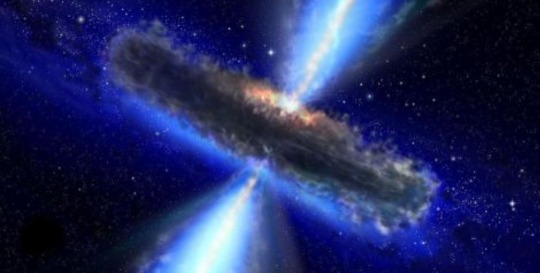
The gravitational force tugging between two bodies depends on how massive each one is and how far apart the two lie, according to NASA Glenn Research Center.
Even as the center of the Earth is pulling you toward it (keeping you firmly lodged on the ground), your center of mass is pulling back at the Earth. But the more massive body barely feels the tug from you, while with your much smaller mass, you find yourself firmly rooted thanks to that same force.

Yet Newton's laws assume that gravity is an innate force of an object that can act over a distance.
Albert Einstein, in his theory of special relativity, determined that the laws of physics are the same for all non-accelerating observers, and he showed that the speed of light within a vacuum is the same no matter the speed at which an observer travels, according to Wired.
As a result, he found that space and time were interwoven into a single continuum known as space-time.

And events that occur at the same time for one observer could occur at different times for another.
As he worked out the equations for his general theory of relativity, Einstein realized that massive objects caused a distortion in space-time. Imagine setting a large object in the center of a trampoline.
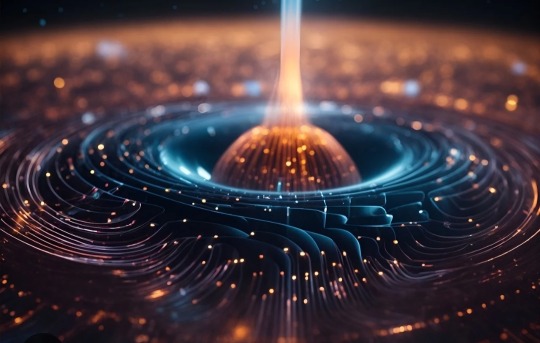
The object would press down into the fabric, causing it to dimple. If you then attempt to roll a marble around the edge of the trampoline, the marble would spiral inward toward the body, pulled in much the same way that the gravity of a planet pulls at rocks in space.
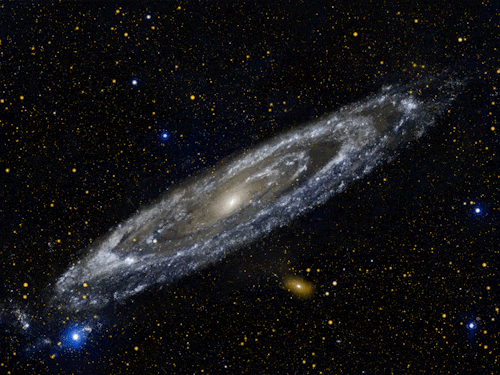
In the decades since Einstein published his theories, scientists have observed countless of phenomena matching the predictions of relativity.
We asked Elena Giorgi, an assistant professor of mathematics at Columbia University a few commonly asked questions about general relativity.
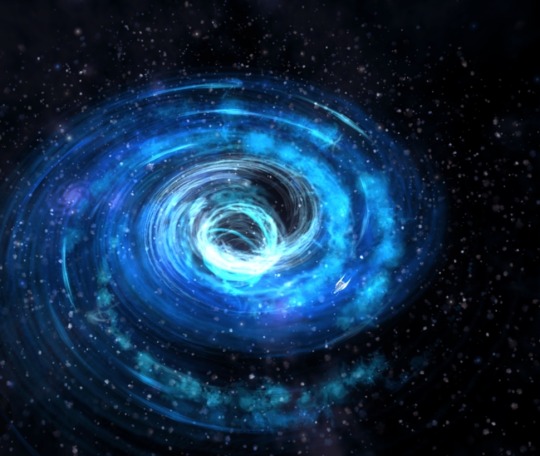
What is general relativity?
General relativity is a physical theory about space and time and it has a beautiful mathematical description. According to general relativity, the spacetime is a 4-dimensional object that has to obey an equation, called the Einstein equation, which explains how the matter curves the spacetime.
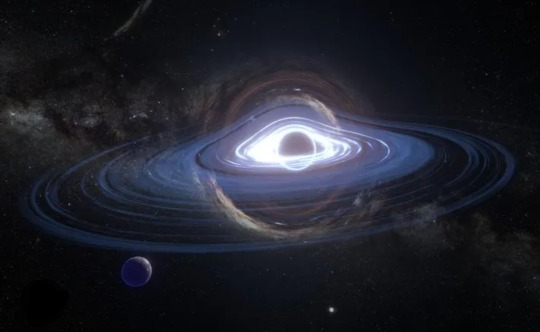
What force is explained by general relativity?
General relativity explains gravity, and in this theory, it is not really a "force" anymore. The gravitational field comes out of the description of general relativity as a result of the curved spacetime.
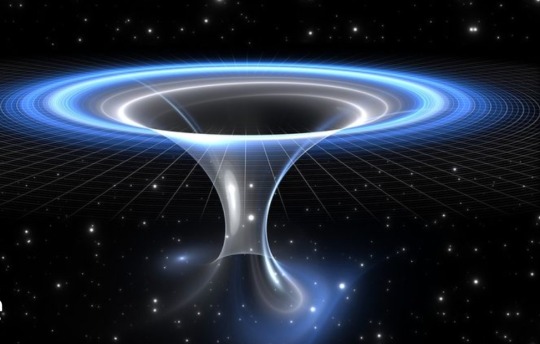
When was the theory of general relativity established?
General Relativity was established in 1915 by Albert Einstein and the first solutions to the Einstein equation were found already in early 1916.

Is general relativity proven?
General relativity has passed all the experimental tests so far, but its applicability is expected to break down when [the] effects of quantum mechanics (the theory of the very small particles) should become dominant
Originally published on www.space.com
COMING UP!!
(Saturday, October 7th, 2023)
"CAN WE LAND ON JUPITER??"
#astronomy#outer space#alternate universe#astrophysics#universe#spacecraft#white universe#parallel universe#astrophotography#space#cosmology#cosmos#big bang comics#constellations
132 notes
·
View notes
Photo

2023 June 29
A Message from the Gravitational Universe Illustration Credit: NANOGrav Physics Frontier Center; Text: Natalia Lewandowska (SUNY Oswego)
Explanation: Monitoring 68 pulsars with very large radio telescopes, the North American Nanohertz Observatory for Gravitational Waves (NANOGrav) has uncovered evidence for the gravitational wave (GW) background by carefully measuring slight shifts in the arrival times of pulses. These shifts are correlated between different pulsars in a way that indicates that they are caused by GWs. This GW background is likely due to hundreds of thousands or even millions of supermassive black hole binaries. Teams in Europe, Asia and Australia have also independently reported their results today. Previously, the LIGO and Virgo detectors have detected higher-frequency GWs from the merging of individual pairs of massive orbiting objects, such as stellar-mass black holes. The featured illustration highlights this spacetime-shaking result by depicting two orbiting supermassive black holes and several of the pulsars that would appear to have slight timing shifts. The imprint these GWs make on spacetime itself is illustrated by a distorted grid.
∞ Source: apod.nasa.gov/apod/ap230629.html
141 notes
·
View notes
Text
The General Theory of Relativity - Einstein’s Masterpiece
Few scientific theories have revolutionized our understanding of the universe as profoundly as Einstein’s General Theory of Relativity. Published in 1915, it redefined gravity not as a force, but as the warping of space and time caused by mass and energy. This elegant yet mind-bending idea has since been confirmed through numerous experiments and continues to shape modern astrophysics, from black holes to the expanding universe.
What is General Relativity?
Before Einstein, gravity was best described by Newton’s Law of Universal Gravitation, which treated it as a force acting at a distance. However, Einstein realized that this approach had limitations, especially when dealing with high speeds and strong gravitational fields.
Einstein’s breakthrough was to link gravity with the fabric of spacetime itself. According to general relativity, mass and energy bend spacetime, and objects move along curved paths within this warped geometry. The famous equation summarizing this idea is:
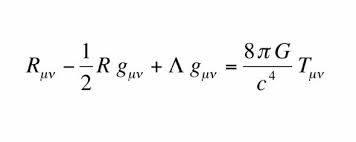
This equation (the Einstein Field Equation) describes how spacetime curvature is influenced by mass energy, forming the foundation of modern gravitational physics.
Key Concepts of General Relativity
Spacetime is Curved by Mass and Energy: Einstein proposed that instead of thinking of gravity as a force, we should think of it as the bending of spacetime. Imagine placing a heavy ball on a rubber sheet—the sheet curves under the ball’s weight, and smaller objects move along these curves. Similarly, planets and stars distort spacetime, and objects move along the paths dictated by this curvature.
The Equivalence Principle: One of the fundamental ideas behind general relativity is the equivalence principle, which states that the effects of gravity are indistinguishable from acceleration. This means that if you're in a sealed box, you wouldn't be able to tell whether you're being pulled by Earth's gravity or accelerating in deep space. This insight led Einstein to realize that gravity affects time itself—a phenomenon known as gravitational time dilation.
Gravitational Time Dilation: Time runs slower in stronger gravitational fields. For example, clocks on Earth run slightly slower than those on the International Space Station because the ISS is farther from Earth’s gravitational influence. This effect has been experimentally verified using atomic clocks placed at different altitudes. A practical application of this is GPS satellites, which must account for general relativity to maintain accurate positioning. Without these corrections, GPS systems would drift by several kilometers per day!
Light Bends Around Massive Objects: One of the first experimental confirmations of general relativity came from gravitational lensing, where light bends as it passes near massive objects like stars or galaxies. During a 1919 solar eclipse, astronomers observed starlight bending around the Sun exactly as Einstein predicted, proving his theory to the world. Today, gravitational lensing is used to map dark matter and study distant galaxies.
Black Holes and Singularities: Perhaps the most mind-blowing consequence of general relativity is the black hole—a region where spacetime is so warped that nothing, not even light, can escape.
At the heart of a black hole lies a singularity, a point of infinite density where the laws of physics break down. The discovery of actual black holes, including the famous first image of a black hole’s event horizon in 2019, confirms Einstein’s predictions in the most extreme conditions.
How General Relativity Changed Astrophysics
General relativity has transformed astrophysics in several ways. The discovery of gravitational waves, first detected by LIGO in 2015, confirmed Einstein’s prediction that space itself can ripple due to cosmic events like colliding black holes. The theory also underpins modern cosmology, helping explain the expansion of the universe and the role of dark energy. Additionally, it provides the foundation for understanding extreme objects like black holes and neutron stars, whose behaviors align perfectly with Einstein’s equations.
Did You Know?
The GPS system corrects for both special and general relativistic effects to keep your location accurate!
Einstein initially resisted the idea of black holes, believing they were a mathematical curiosity rather than real objects.
The first experimental proof of gravitational redshift (time running slower in strong gravity) was done in 1959 with the Pound-Rebka experiment at Harvard University.
The first image of a black hole was released in 2019 by the Event Horizon Telescope, a global network of radio telescopes.
Conclusion
General relativity is more than just a beautiful set of equations—it’s a theory that governs the universe on the grandest scales. From explaining black holes to shaping our understanding of space and time, Einstein’s masterpiece remains one of the most successful scientific theories ever developed.
And yet, mysteries remain. How does gravity fit into quantum mechanics? What lies inside a black hole? Is time travel possible? As we continue to explore the cosmos, Einstein’s ideas will undoubtedly guide us toward new discoveries, just as they have for over a century.
The universe bends to the weight of gravity, and thanks to Einstein, we now know why.
0 notes
Text

Yes, according to the theory of general relativity, an electron field does exist within spacetime, as any form of energy, including the energy contained within an electric field generated by an electron, can contribute to the curvature of spacetime; essentially meaning that the electron's field "distorts" the fabric of spacetime around it, although the effect is usually very small due to the electron's tiny mass.
Key points to remember:
Electromagnetic fields and spacetime:
In Einstein's theory, electromagnetic fields, including those created by electrons, are considered a form of energy that can warp spacetime.
Quantum Field Theory perspective:
In quantum field theory, an electron is viewed as an excitation of the "electron field" which permeates all of spacetime.
Gravitational effect:
While the curvature caused by an individual electron is minuscule, the collective effect of many charged particles can become significant.
0 notes